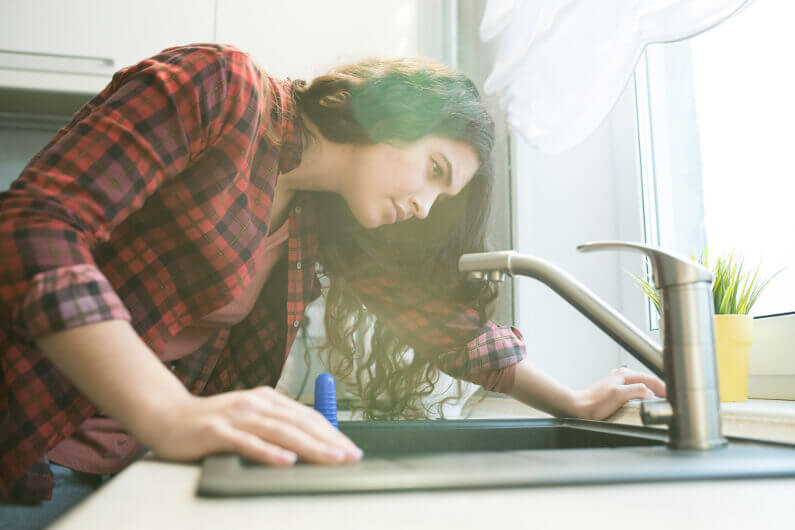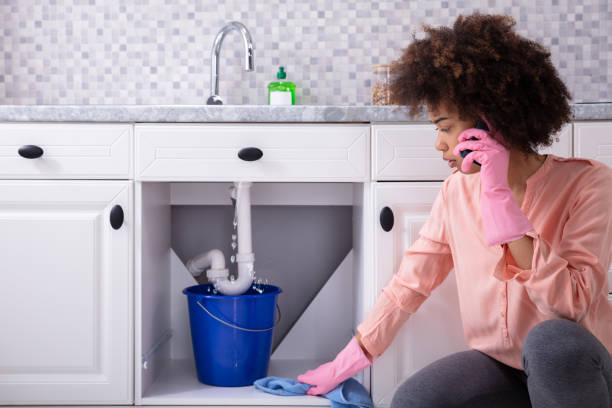Your Guide to Plumbing Issues in Older Homes
Your Guide to Plumbing Issues in Older Homes
Blog Article
We've encountered this post about Common Plumbing Problems in Older Homes below on the web and thought it made sense to talk about it with you here.

Older homes commonly include beauty, character, and history, however they can also bring a host of plumbing problems. Whether you're handling aging pipes, low tide pressure, or leaks, recognizing exactly how to resolve these common issues is crucial to maintaining a risk-free and practical home. In this guide, we'll discover the typical pipes obstacles encountered by older homes and supply useful remedies to maintain your plumbing in leading form.
Understanding Typical Plumbing Issues
Aging Pipelines
Among the most usual concerns in older homes is aging pipes. Depending upon the era in which your home was built, the pipes could be made from materials that have worn away over time, such as galvanized steel, cast iron, or even lead. These materials can wear away, come to be breakable, or establish leaks, bring about water damage and possible carcinogen.
Water Top Quality Testing
Older pipelines can influence the high quality of your water. Conduct a water high quality examination to look for pollutants such as lead, corrosion, or other pollutants that may be presented by maturing pipelines.
Solutions for Common Plumbing Issues
Replacing Aging Pipelines
If your home has old, deteriorating pipes, think about changing them with modern-day materials like copper or PEX. This can be a considerable financial investment, yet it will avoid future problems and boost the safety and integrity of your plumbing system.
Repairing Low Tide Stress
To deal with low tide stress, beginning by cleaning or replacing old fixtures and eliminating mineral accumulation in the pipelines. If the issue lingers, it might be essential to change areas of rusty pipelines.
Fixing and Changing Dripping Pipelines
For small leaks, you can use pipe clamps or epoxy putty as a short-term repair. Nevertheless, it's finest to change dripping pipelines totally to stay clear of more damages.
Updating Fixtures
Upgrading old components to modern-day, water-efficient versions can boost your home's pipes performance and decrease water intake. Seek components with the WaterSense tag for the very best effectiveness.
Taking Care Of Pipe Rust
If your pipes are corroded, replacing them with corrosion-resistant products like copper, PVC, or PEX is the most effective remedy. Routine assessments and water high quality maintenance can help prevent better deterioration.
Low Tide Pressure
If you're experiencing low tide stress, maybe because of natural resources, corrosion inside the pipelines, or old components that are no longer functioning efficiently. This can be a significant aggravation, particularly in areas like showers and sinks.
Dripping Pipelines
Leakages are one more regular concern in older homes, frequently brought on by corroded or worn-out pipelines. Even little leaks can lead to considerable water damages, mold and mildew growth, and enhanced water expenses if not dealt with without delay.
Obsolete Components
Out-of-date plumbing components such as faucets, commodes, and showerheads not just look old yet may also be much less efficient, prone to leakages, or inappropriate with modern-day pipes criteria.
Pipeline Corrosion
Rust is a common trouble in older pipes, specifically those made from galvanized steel or cast iron. Rusty pipes can limit water flow, create staining, and at some point bring about leakages or pipeline ruptureds.
Analyzing the Problem of Your Plumbing
Evaluating Visible Pipelines
Start by evaluating any type of noticeable pipes in your house, such as those in cellars, crawl spaces, or under sinks. Seek indications of rust, leaks, or rust, which can show underlying problems.
Looking for Leaks
Look for leakages by inspecting locations around faucets, commodes, and under sinks. You can also check your water meter before and after a period of no water make use of to discover hidden leaks.
When to Call an Expert
While some pipes issues can be managed with do it yourself remedies, there are times when it's best to employ a specialist. If you're managing major leaks, substantial deterioration, or are unclear about the condition of your pipes, an accredited plumbing can supply expert assessment and repair work.
Preventive Upkeep Tips
Normal Assessments
Regularly inspect your plumbing system for signs of deterioration. Catching problems early can stop expensive fixings down the line.
Water Stress Law
Guarantee your water pressure is within the suggested array to avoid stressing your pipes and components. A plumbing can mount a stress regulatory authority if needed.
Water High Quality Upkeep
Set up water filters or conditioners if your water top quality is poor. This can shield your pipelines and components from damages triggered by difficult water or pollutants.
Positive Pipeline Substitute
If your home has very old pipes, think about positive substitute prior to significant concerns develop. This can save you from emergency situation repairs and water damages.
Final thought
Handling pipes problems in older homes calls for a combination of vigilance, preventive upkeep, and prompt upgrades. By comprehending the typical difficulties and recognizing when to look for expert assistance, you can ensure your plumbing system stays useful and trusted for years to find.
7 Common Plumbing Issues in Older Homes
Read More Plumbing Articles
Whether you're mulling over purchasing your dream period property, or you already own one, being aware of common plumbing problems in old homes can help you avoid expensive mishaps.
Many plumbing problems in old homes are similar to those faced in newer properties, but some are more prevalent in houses over a certain age. If you've recently bought an old house or haven't had your aging plumbing system inspected in a while, it's worth keeping an eye out for the following issues:
Bad Pipe Materials
Depending on the age of your home, the pipe materials used in your plumbing system may not comply with modern building codes and could be unsafe.
Lead pipes are the most dangerous type of old plumbing pipes. This metal was once used extensively for manufacturing water pipes because it's easy to shape and has a long lifespan. Plumbers also used it to solder joints between pipes made from other materials. However, lead can cause serious health problems, particularly in children. Drinking water from pipes containing lead can lead to lead poisoning symptoms, such as stomach pain and fatigue, so it's essential to replace them if you discover them in your home.
Outdated Fixtures
Even if the previous owners installed high-quality fixtures, these won't be immune to the effects of age and wear and tear. Over time, fixtures can corrode and wear down, increasing the likelihood of leaks and clogs.
Sometimes, an outdated fixture can be a minor irritation that makes using your plumbing system less convenient. However, it's best to maintain older plumbing components carefully and replace them when they show signs of failure to avoid a major leak and water damage.
Corroded or Leaking Pipes
Corroded pipes are a common plumbing issue in old homes. Corrosive substances in the water supply can gradually break down the metal used to make the pipes, eventually causing leaks. Corrosion can also cause sediment to build up, increasing the chances of a clogged pipe. All these issues take time to develop, making them more likely in old house plumbing.
Drain Problems
Older home drainage systems were often installed before the arrival of appliances such as garbage disposals, so they're frequently incapable of handling modern household usage. The result could be frequent clogs or water backing up into sinks and other fixtures.
A failing sewer line is the most serious drainage issue commonly encountered in old houses. This problem is more likely if you've remodeled your home to add more fixtures, placing more pressure on a sewer line not designed for the purpose. Eventually, the line can become clogged, causing unpleasant indoor smells, poor drainage and contaminated wastewater backing up into your fixtures.
Pipe Bellies
Pipe bellies develop when pipes buried in your home's foundation start sagging as the building settles. They create downward slopes, affecting water drainage and increasing the risk of significant blockages. You don't need to worry about pipe bellies in a pressurized main line, as the water pressure prevents the pipes from clogging, but they can cause issues in drain lines.
Root Intrusion
Root intrusion occurs when trees and other shrubs grow roots too close to your sewer line or water service line. Sometimes, the roots penetrate the pipe walls, leading to leaks and soft or wet areas in your yard.
Unfortunately, root intrusion is a more common plumbing problem in old homes. That's because older houses are more likely to have pipe bellies allowing standing water to accumulate, attracting roots to the moist conditions.
https://www.elocal.com/resources/home-improvement/plumbing/faq/plumbing-issues-in-older-homes/

I stumbled upon that post on Main Plumbing Issues Found in Old Houses when perusing the search engines. Liked our write-up? Please share it. Help someone else discover it. Thanks a bunch for your time. Return soon.
Click Here Report this page